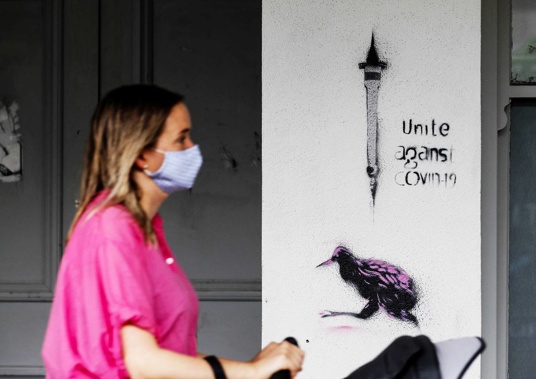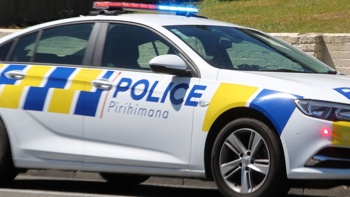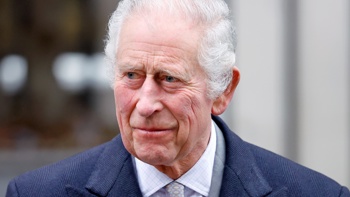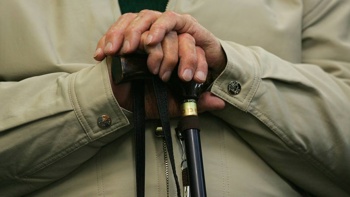
New Zealand's 63 Covid cases yesterday were the country's fewest in two months, but it's still too soon to move Auckland to the orange light setting, according to an expert.
However epidemiologist Michael Baker says our plummeting case numbers — the seven-day average of new community cases is at 99 — is good news.
"The rates have halved in a little under two weeks, which is obviously a very positive trend. I've been surprised at how much it's come down really quickly just in the last two and a half weeks."
It needs to be nearly two weeks since the traffic light system began to know what impact opening up more freedoms to vaccinated Kiwis, including those in Auckland, was having, Baker said.
Auckland should remain in the red setting until then at least, the University of Otago public health professor said.
New Zealand switched from alert levels to the traffic light system nine days ago, with Auckland — where the Delta outbreak began in August — and several regions with low vaccination rates placed in the red light setting, and the rest of the country in the less onerous orange light.
Cabinet reviews those settings tomorrow.
He didn't expect to see the impact of the traffic light system on case numbers until later this week, Baker said.
"If there's a change, human behaviour may take a day or two to respond.
"Then if it does result in more [virus] transmission, that takes the incubation period, which may be 3 to 5 days or a bit longer, then people have to get sick enough to come forward for testing, which usually takes a couple of days, and then the testing is [processed] overnight."
Fifty-three of yesterday's new cases were in Auckland, three in Waikato, two each in Northland and Canterbury, one each in Bay of Plenty and Taranaki and a historical case in the Southern District Health Board area.
Testing and contact tracing, summer weather keeping people outdoors and rising vaccination rates were making a difference, Baker said, with 94 per cent of eligible Kiwis having had at least one dose and 89 per cent fully vaccinated.
He was confident the 5 per cent single-dosed will get their second shot, because they'll want the full benefits of the vaccine pass and had already taken the first step toward it.
"We're heading to be 95 per cent fully vaccinated of our eligible population …it'll take a few weeks to get there. It may not be quite by Christmas, but we're certainly heading in the right direction."
"That means about 80 per cent of the total population is fully vaccinated. And hopefully the vaccination of children will happen not too far into the new year."
Concerns were raised yesterday that there were many more vaccine passes being requested than people vaccinated in New Zealand.
But that was because people could download their passes to more than one device, so some were requesting more than one My Vaccine Pass, Ministry of Health national digital services group manager Michael Dreyer said.
People vaccinated in other countries were also requesting the passes, Dreyer said.
He thought Auckland could move out of the red light setting if case numbers continued to fall through to the end of the week, Baker said.
The city's borders will open again on Wednesday, after four months of being closed to all but essential travellers.
But regions with low vaccination rates, such as include Northland, Tairāwhiti, Lakes and Whanganui, should remain in the most restricted settings for now, he said.
Many lower-vaccinated areas have a high Māori population, whose fully vaccinated rate of 74 per cent is well behind the national rate.
The next review of traffic light settings after tomorrow's will be on January 17, before continuing on a fortnightly basis.
They're determined based on vaccination, the state of the health system, testing, contact tracing and case management capacity, as well as the rate and effect of virus transmission.
The main thing to remember was Auckland case numbers right now reflected life in level 3, step 2 and the efforts in vaccination, testing and contact tracing, which were still working "full bore" to suppress virus transmission, Baker said.
That meant hospitals hadn't been overwhelmed - 60 cases, half of whom were unvaccinated, were hospitalised yesterday, with three in intensive care or high dependency units.
It was a different story for hospitals in the Europe and the US, where death rates were also rising, he said.
Forty-six people have died of Covid-19 since the virus arrived in New Zealand in February 2020, two this week.
He didn't want to be "too Grinch-like" as Christmas neared, because the signs here were positive ahead of the festive season, Baker said.
"But one thing to be very wary of is what's called exceptionalism. You think, 'Oh well, because we haven't had the monumental death toll of most countries, the virus will behave differently here'.
"It won't. The reason it's behaving itself is because we're behaving ourselves. We're doing the right things. And [we need to] just keep remembering that, and not to relax our guard."
Take your Radio, Podcasts and Music with you









